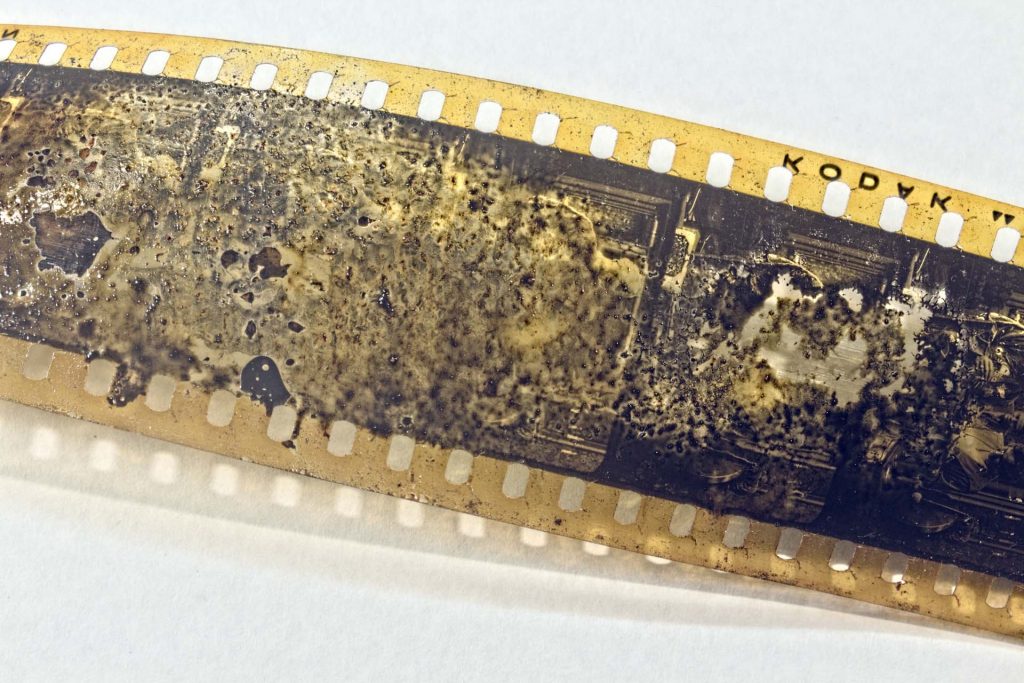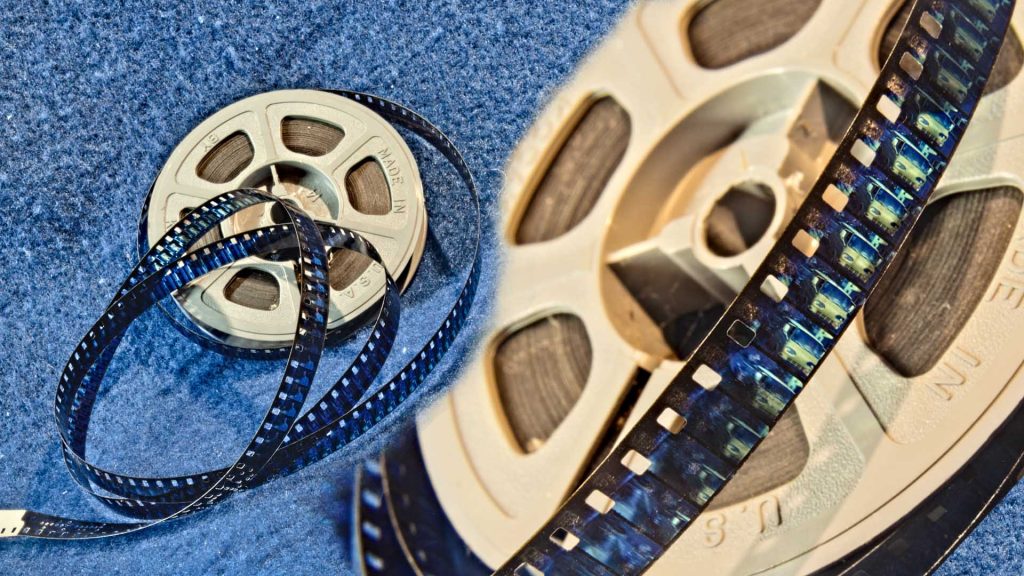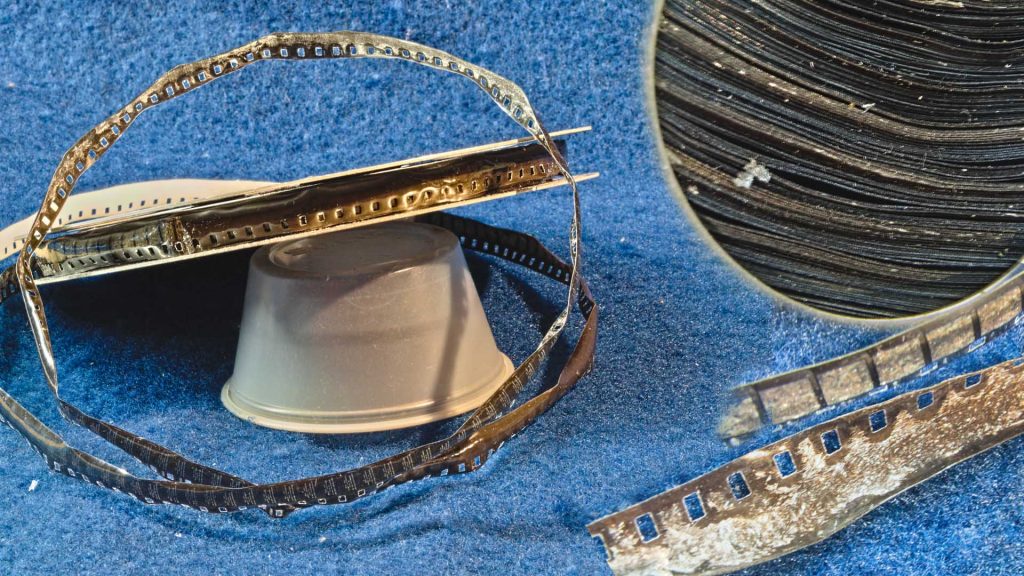Understanding the care of flexible films
Glass dry plates certainly did much to contribute in the advancement of popular and practical photography, but they still had problems. They were fragile and rigid. They needed to be handled in a darkroom. Things became worse when the plates needed to be handled in quantity, as the numbers became heavy. All of these remaining issues were limiting in the practical number of pictures, which might be taken at any given time.
A solution to these limitations would be to use a roll of flexible film, which was both transparent and light sensitive. As a long strip of film was wound through the camera, multiple exposures could be taken at spaced intervals, developed and cut into individual film ‘negatives’. With the invention motion pictures, long strips of multiple exposures would be projected to a screen, in rapid succession, producing the amazing illusion of live motion.

The earliest film negatives were made with a nitro-cellulose base. They are extremely flammable and become even more so as it deteriorates with time. The above picture is an example of decomposing nitrate film. Decomposing nitrate will emit a foul odor (also flammable). The film will tint yellow and bubbles and blotches will destroy the image. Nitrate film may be preserved in special conditions, but deteriorate rapidly above 70 F degrees and 50% humidity. DO NOT STORE NITRATE FILM!
A homeowner heirloom collection generally will not need to worry about a fire hazard with American home movies. However, some of the earliest still film negatives were made with nitrate. Suspect films should be inspected for the signs of decomposition as shown here. Seek professional advice if you believe you may have nitrate films or negatives. Hollywood continued to produce nitrate prints up until around 1950. If you own any professional theater movie prints, be sure they are labeled “Safety Film” and not “Nitrate”.

Safety film, compared to nitrate, is what it says – safe. It will burn, but bubbly and slow, rather than flash and boom! Both films types were made using cellulose (cotton). While a nitrate film base is technically “nitro-cellulose”, the safety film base is some form of “cellulose acetate”. Unfortunately, this also unstable material. It will generally keep for about 70 years, before it also begins to disintegrate. Safety film would prefer to be stored at around 40 degrees Fahrenheit at about 30% humidity. High temperature and condensing conditions are very harmful for films.

As safety film deteriorates, it will begin to distort and shrink. A sour “vinegar” odor may begin to emit and is commonly known as “vinegar syndrome”. Eventually, the plastic film will crystallize and crumble. The 8mm home movies are especially vulnerable because of their small physical size. Shrinkage and brittleness may make running the film through a digital copy machine very difficult. The larger, 16mm movies suffer the same process, but may tolerate a bit more distortion before becoming unusable. Still film negatives and projection slides will shrink and wrinkle.
Color films and prints have an added problem. Color dyes in films and papers will fade in time, eventually leaving what amounts to a brown tinted, black and white print. Computer restoration may be able to help, if some color still exists, but if the color is gone – it is gone. Amazingly, the Kodachrome and Ektachrome processes stand up well over time. I have 16mm color movies from the 1930s. The safety film base is shrinking, but the colors are still good.